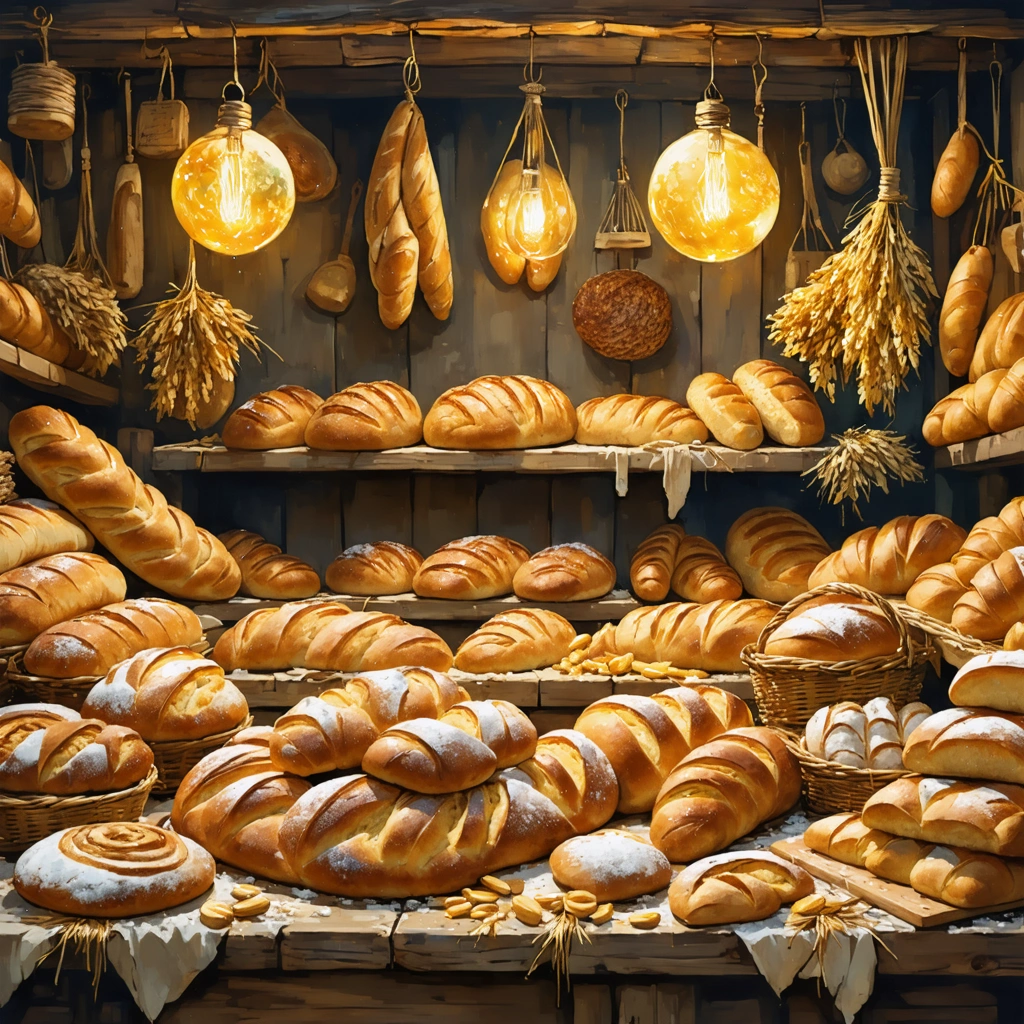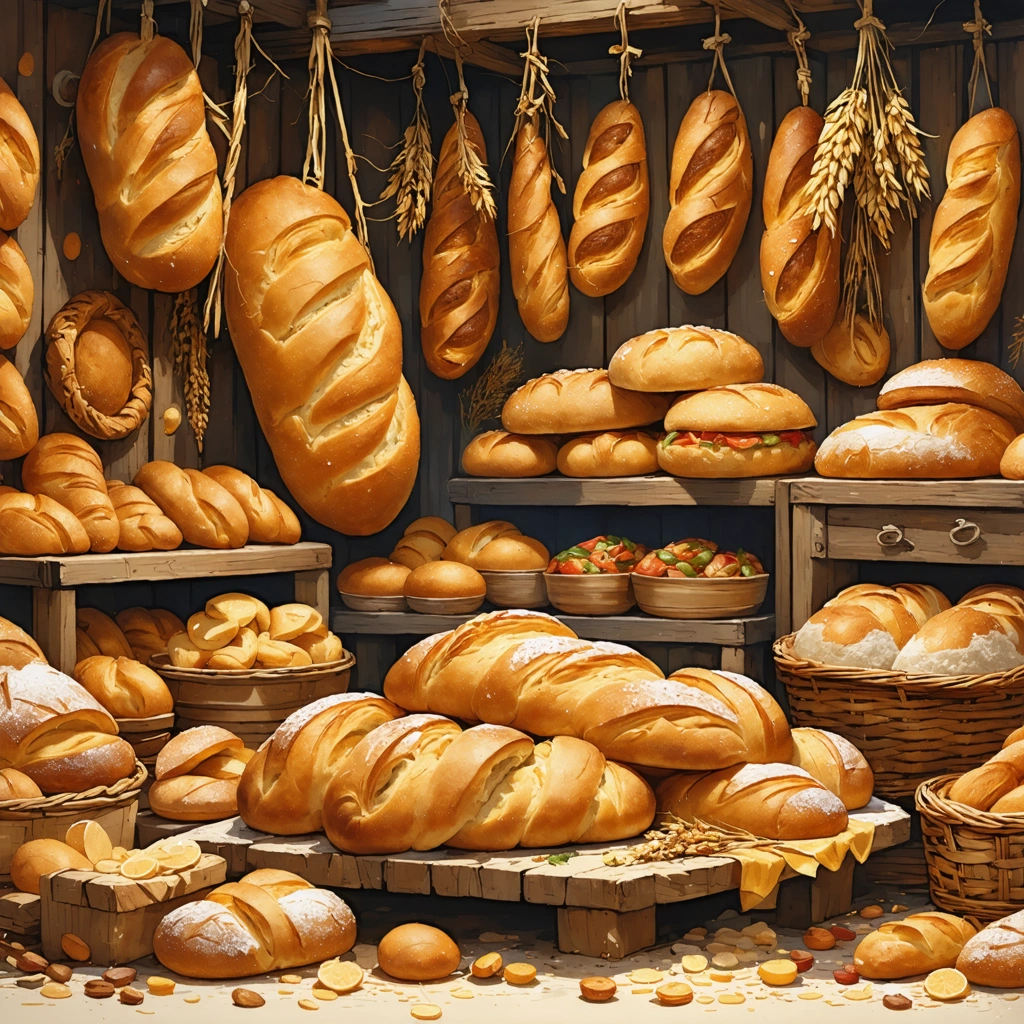
Breaking Bread: Why the World’s Bread Culture Deserves a Closer Look
Have you ever paused to consider how a simple piece of bread can tell a story that spans continents, centuries, and cultures? From the warm, fluffy naan bread of South Asia to the tangy, crusty sourdough loaves beloved in San Francisco, the humble pan—or bread—carries with it a rich narrative of human connection and culinary tradition. Yet, despite its universal presence, bread culture often gets overlooked as just “something to fill the stomach.” This underappreciation masks the incredible diversity and shared heritage baked into every loaf.
The challenge lies in truly appreciating how bread, in all its myriad forms, acts as a culinary ambassador. Instead of seeing bread as merely a side dish or a backdrop to meals, what if we recognized it as a vibrant expression of culture, geography, and history? When you think about it, bread is one of the oldest, most fundamental foods known to humanity—it’s both a necessity and a symbol. However, the vast spectrum of bread types across global cuisine is often siloed by region or tradition, leaving many unaware of the connections that tie them together.
This fragmentation can make it harder to appreciate bread’s role as a unifier rather than a divider. How often do we take the time to explore the parallels between, say, the chewy pita pockets of the Mediterranean and the flaky, buttery croissants of France? Or the simple, rustic rye breads of Eastern Europe and the enriched, sweet breads found in Latin America? Each variation of bread represents not only local ingredients and baking techniques but also stories of migration, adaptation, and innovation.
More Than Just Dough: How Bread Culture Bridges Continents
The richness of global bread culture lies in its ability to reflect the environment and social fabric of a place. Consider naan, the iconic flatbread that is central to Indian meals. Its preparation in a tandoor oven imparts a smoky char and tenderness that is unmistakably tied to its place of origin. On the other hand, sourdough’s complex fermentation process, perfected over generations in places like San Francisco, speaks to a different climate, microbial ecosystem, and baker’s patience. Yet, both breads share a common thread—they are crafted with care, rooted in community, and integral to daily life.
This interplay between local uniqueness and universal appeal is what makes bread culture so fascinating. It’s a powerful reminder that, despite our differences, there is a shared human instinct to create, break, and share food together. Bread, in all its forms, is a universal language spoken by millions, binding us through tradition and innovation.
For food lovers, cultural enthusiasts, and curious cooks alike, understanding bread’s global journey opens doors to a deeper appreciation of culinary diversity. It also encourages us to explore new tastes and techniques, to experiment with recipes inspired by distant lands, and to honor the hands that have crafted these staples through time.
What This Article Will Explore
In the sections that follow, we’ll embark on a flavorful journey through the world’s bread culture. You’ll discover:
- How different types of bread—from naan and pita to baguettes and focaccia—reflect the histories and environments of their regions.
- The role of bread as a cultural connector, highlighting stories of migration and fusion in global cuisines.
- The evolving relationship between traditional bread-making practices and modern culinary trends.
- Practical insights into how you can bring a slice of this global bread culture into your own kitchen.
So if you’ve ever wondered why bread feels both comforting and intriguing, or if you simply want to deepen your connection to the foods you eat, this article is your invitation to celebrate the universal story of bread—one pan at a time.

Pan: Bread’s Universal Story – How Bread Unites Global Cuisines from Naan to Sourdough
What is the significance of "pan" in bread culture worldwide?
The word pan originates from Latin, meaning "bread," and has evolved to symbolize bread itself in many languages, especially Spanish and Italian. In the context of bread culture, "pan" is more than just a staple food; it represents a universal culinary tradition that transcends geographical and cultural boundaries.
Across the globe, bread acts as a cultural connector — a shared element in daily meals, religious rituals, and social gatherings. From the crusty baguettes of France to the chewy pita of the Middle East, the concept of "pan" embodies humanity's collective history of grain cultivation, fermentation, and baking techniques. This shared heritage highlights how bread culture is deeply embedded in global cuisine, serving as a symbol of sustenance and community.
How does bread reflect the diversity of global cuisine?
Bread is one of the most ancient and widespread foods, appearing in countless forms around the world. Its variations reflect local ingredients, climates, and culinary traditions. For example:
- Naan: A soft, leavened flatbread traditionally baked in a tandoor oven, originating from South Asia. It often accompanies rich, spiced curries, showcasing the importance of bread in Indian and Pakistani cuisine.
- Sourdough: Known for its tangy flavor and chewy texture, sourdough is a fermented bread rooted in European and American baking traditions. Its artisanal revival reflects a growing appreciation for natural fermentation and slow food movements worldwide.
- Focaccia: An Italian flatbread known for its olive oil-infused crust, often topped with herbs or vegetables, illustrating the Mediterranean influence on bread culture.
- Pita: A Middle Eastern bread with a pocket, perfect for stuffing with meats and vegetables, highlighting bread’s role in portable, versatile meals.
- Arepas: Corn-based flatbreads from Latin America, emphasizing the use of native grains and regional culinary techniques.
These examples show how bread is adapted to local tastes and ingredients, making it a fundamental expression of global cuisine. Beyond taste, bread serves as a canvas for cultural identity and innovation.
Why is bread considered a unifying element in global food cultures?
Bread’s role as a unifier in global cuisine stems from its universality and adaptability. While ingredients and methods differ, bread universally symbolizes nourishment and hospitality. It often acts as a centerpiece during meals, rituals, and celebrations, representing more than just food but also cultural values.
Moreover, the process of making bread—mixing flour, water, salt, and yeast or natural ferment—connects communities across time and space. The shared techniques, such as kneading, proofing, and baking, create common ground among diverse cultures. This shared practice has led to a fascinating exchange of ideas and recipes, influencing global bread culture over centuries.
In modern times, the globalization of food markets and migration has further intertwined bread traditions, with fusion breads combining elements like spices, grains, and baking styles from different parts of the world. The rising popularity of sourdough baking, for example, reflects an international interest in traditional methods and artisanal quality.
How can understanding bread culture enhance our appreciation of global cuisine?
Understanding the history and diversity of bread enriches our appreciation for global cuisine by revealing the interconnectedness of human societies through food. Bread culture teaches us about agricultural practices, trade routes, and cultural exchanges that have shaped civilizations.
For food enthusiasts, chefs, and cultural historians, exploring bread varieties offers insights into:
- The use of indigenous grains and fermentation techniques
- The influence of climate and geography on baking methods
- The social and religious significance of bread in different communities
- The evolution of bread in response to globalization and modern dietary trends
By embracing this knowledge, one gains a deeper connection to the stories behind every loaf, naan, or sourdough boule, transforming a simple food into a cultural experience.
What are some contemporary trends in bread culture across global cuisines?
Recent years have witnessed several fascinating trends that highlight bread’s ongoing evolution in global cuisine:
- Artisanal and Sourdough Revival: There is a growing global interest in traditional bread-making techniques, particularly sourdough, driven by health benefits and flavor complexity.
- Fusion Breads: Bakers are combining elements from different bread traditions, such as matcha-infused baguettes or naan tacos, reflecting multicultural influences.
- Health-conscious Baking: The rise of gluten-free, whole grain, and ancient grain breads caters to modern dietary needs while respecting traditional bread culture.
- Sustainability Focus: Use of local grains, organic ingredients, and zero-waste baking practices is becoming prominent, aligning bread culture with environmental consciousness.
- Digital Sharing and Education: Online communities and social media platforms have democratized knowledge about bread making, allowing people worldwide to experiment and celebrate their own and others’ bread traditions.
These trends demonstrate that bread culture is dynamic, continually adapting while preserving its role as a foundational element in global cuisine.
How can individuals explore and participate in the global bread culture?
Anyone interested in bread culture can deepen their connection to global cuisine through several practical steps:
- Experiment with Recipes: Try baking different types of bread such as naan, sourdough, focaccia, or rye to understand diverse techniques and flavors.
- Learn the History: Read about the origins and cultural significance of various breads to appreciate their place in human history.
- Visit Local Bakeries: Support artisanal bakers who preserve traditional methods and explore breads from different cultures.
- Attend Workshops: Join bread-making classes that often include cultural stories and hands-on experience.
- Share and Connect: Participate in online forums or social media groups dedicated to bread culture to exchange tips, recipes, and stories.
By engaging in these activities, individuals not only enhance their culinary skills but also become part of a global community connected by the timeless tradition of bread.


